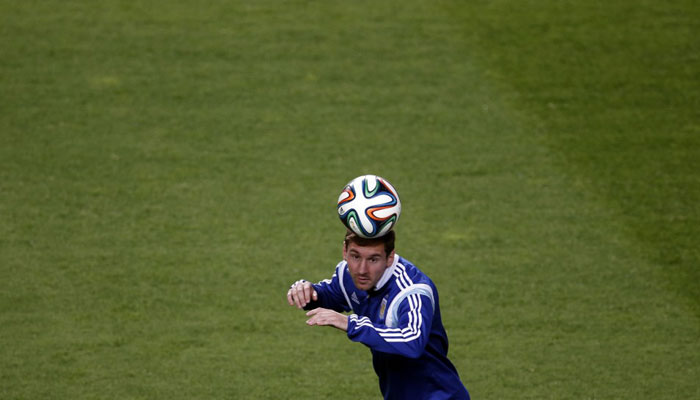Soccer 'headers' may do more brain harm than most collisions
Accidental head knocks were not related to cognitive test performance
April 27, 2018

For soccer players, regularly “heading” the ball may have a bigger effect on everyday cognitive functioning than occasional accidental head impacts, a US study suggests.
Researchers examined more than 300 adult amateur soccer players in New York City and found the ones who headed the ball most often during practice and games had poorer performance on tests of psychomotor speed, attention and memory.
Accidental head knocks were not related to cognitive test performance, the team reports in Frontiers in Neurology.
“The focus in terms of head injury in sports has really been on concussions and recognized symptomatic impacts to the head, typically due to players colliding with each other or falling down,” said lead author Dr. Michael Lipton of the Albert Einstein College of Medicine of New York City.
“And it’s probably misguided to be so tunnel-vision focused on concussion as the problem,” Lipton said in a telephone interview.
Researchers recruited 308 players ranging in age from 18 to 55, who had played for at least five years and were actively playing six or more months each year.
Participants filled out questionnaires detailing the previous two weeks of soccer activity, including how many times they headed the ball and if they had any unintentional head impacts. They also completed tests of verbal learning, verbal memory, psychomotor speed, attention and working memory.
The players, 80 percent of whom were men, completed the surveys and took the tests one or more times at three- to six-month intervals over the next two years.
Overall, players headed soccer balls an average of 45 times during the two weeks covered by each questionnaire. But half of men headed the ball at least 50 times and half of women did so 26 or more times.
During that same period, about one-third of the players suffered at least one unintentional head impact such as a hit to the head by another player or being knocked to the ground or into a goal post.
Players who reported the most headings had the poorest performance on functional tasks known to be affected by brain injury, the authors note. The effect on memory was “borderline,” however, they add.
Falls, collisions and concussion over a lifetime were accounted for, Lipton pointed out.
“We found that in a subset of players . . . there is an adverse effect on cognitive function, which is explained only by heading, (and) that concussions and collisions do not in any way explain the effect on cognitive function,” he said.
The problem seems to be these minor impacts that are repeated much more frequently, Lipton said.
“I think that’s really the key message - that impacts to the head matter even when, at the individual impact level, they may not seem to be causing an immediate problem.”
The changes in cognitive function did not cause any obvious impairment, but the study team is concerned about potential long-term damage.
“What we’re really looking at here is something that is a subclinical effect and the open question, which remains to be answered by more research, is how much of this does it take to cause a permanent effect? And that’s not known yet,” Lipton said.
Anthony Kontos, research director for the UPMC Sports Medicine Concussion Program at the University of Pittsburgh, who wasn’t involved in the study, noted that while the study involved a lot of players, it’s possible participants may have overstated the number of times they headed the ball.
“As a researcher who has published in this area and as a long-time soccer player who played in college and continues to play as an adult, I know first-hand that most players do not accurately recall heading exposure. Most likely, players over estimated their exposure to heading and lifetime head injuries,” Kontos said in an email.
Lipton said more research is needed. “The only way to really understand this is to follow people over a much longer time frame because the effects were small, but the question is how do they build up over time?”











